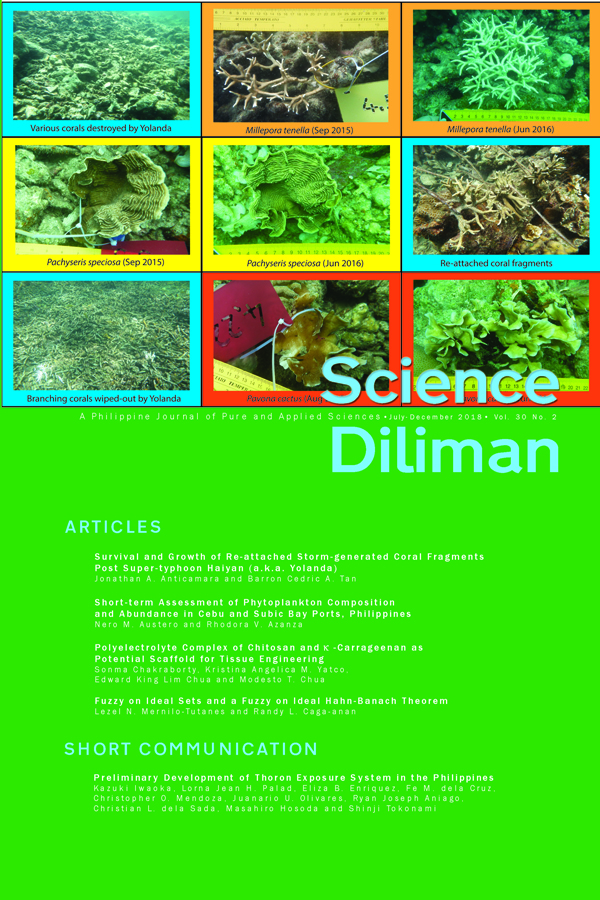Survival and Growth of Re-attached Storm-generated Coral Fragments Post Super-typhoon Haiyan (a.k.a. Yolanda)
Abstract
Coral reefs in Eastern Samar, Philippines were badly damaged by super typhoon Haiyan, which left many reefs in a fragmented state – with many branching corals and other coral forms scattered in loose pieces. As part of the efforts to address this problem, we tested the re-attachment of 43 species of coral fragments to sturdy natural substrates in three reef sites in Eastern Samar (Can-usod and Monbon in Lawaan, and Panaloytoyon in Quinapondan). The results revealed that 88% of re-attached coral fragments survived (45% showed positive growth, and 43% survived with partial tissue mortality). Those that showed positive growth exhibited high growth rates. We also found that fragments of some coral species are more fast-growing (e.g. , Cyphastrea decadia, Echinopora pacificus, and Millepora tenella) than others (e.g. , Porites lobata or Pectinia paeonia). Overall, our results suggest that if Local Government Units (LGUs) invest in the re-attachment of fragmented corals (e.g. , reefs damaged by super typhoons or by various human activities such as fishing), then coral reef degradation in the Philippines would have a better chance of recovering.
Keywords: Coastal management, conservation, Leyte Gulf, reef restoration, super typhoon



